<< Previous | Displaying results 851-900 of 1298 for "nazi germany" | Next >>
Peter was six years old when his mother enrolled him in a special Hitler boarding school for future Nazi Party officials in 1935. He studied traditional academic subjects, but was constantly exposed to Nazi ideas and prepared for a military life. Peter was also a member of the Hitler Youth. He came to believe in Hitler as the savior of Germany. Peter would later describe his indoctrination as a subtle process. It took two years after the war had ended for Peter to come to terms with the atrocities that the…
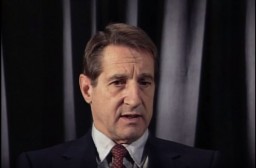
After the Holocaust, many Jewish parents spent months or years searching for the children they had sent into hiding. Learn about the search for surviving relatives.
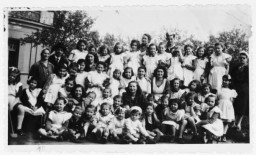
Nazi Germany established the killing centers of Belzec, Sobibor, and Treblinka as part of “Operation Reinhard,” the plan to murder all Jews in the General Government.
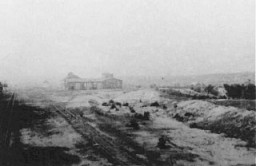
Learn about some of the origins of Holocaust denial, including the euphemistic language the Nazis used to describe their policies and actions.
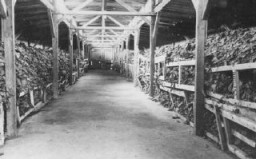
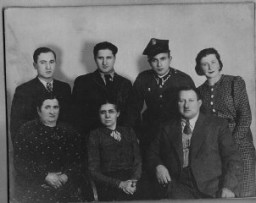
The 1st Infantry Division participated in major WWII campaigns and is recognized for liberating two subcamps of Flossenbürg in 1945.
The 14th Armored Division participated in major WWII campaigns and is recognized for liberating several subcamps of Dachau in 1945.
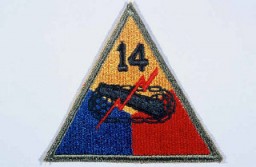
The 95th Infantry Division participated in major WWII campaigns and is recognized for liberating Werl, a prison and civilian labor camp, in 1945.
June 22, 1941. On this date, Germany invaded the Soviet Union in "Operation Barbarossa," its largest military operation during WWII.

Francis grew up in a city with a Jewish community of 5,000. The Ofners belonged to a synagogue that sponsored many social activities, from sports to care for the elderly. In 1931 Francis began law school at the University of Zagreb. While a student, he organized a service that posted on university bulletin boards the translations of speeches by Nazi leaders broadcast on the radio. 1933-39: By the time Hitler became chancellor of Germany, Francis was heavily involved in trying to unify the university's…
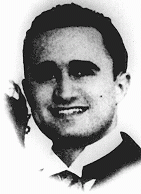
Even before joining the Axis alliance in 1940, Romania had a history of antisemitic persecution. Learn more about Romania before and during World War II.
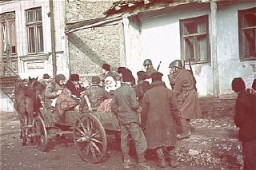
Blood libels were false allegations that Jews used the blood of non-Jewish children in rituals. Nazi propagandists used this false charge in their antisemitic propaganda.
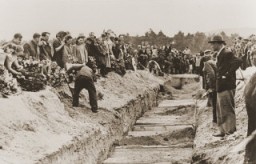
Henry Morgenthau Jr had a key role in creating and operating the War Refugee Board, a government agency tasked with rescuing and providing relief for Jews during the Holocaust.
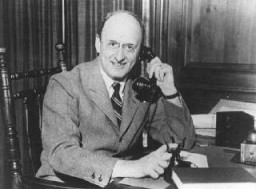
Pete grew up in Essen, a major industrial city on Germany's Ruhr River. His father worked as a cattle hide dealer for an international trading company in nearby Muehlheim. His mother was a designer for a fashionable women's dress shop. Pete, his younger twin brothers, and parents lived together in an apartment. 1933–39: Pete had barely passed his first birthday when the Nazis came to power. His father realized the danger that now faced Jews in Germany, and the family left for Prague, Czechoslovakia, in…
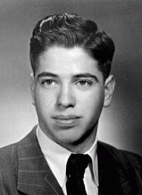
Adolf Hitler repeated the pre-existing claim that Jews used Freemasonry to achieve their political ends. Learn more about the history of Freemasonry.
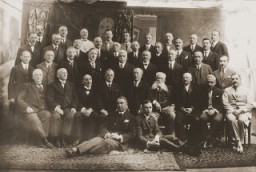
Learn about causes, scope, and impacts of the Great Depression, including how it played a role in Adolf Hitler's emergence as a viable political leader in Germany.
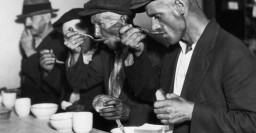
US Major Frank B. Wallis (standing center), a member of the trial legal staff, presents the prosecution's case to the International Military Tribunal at Nuremberg. A chart (top left) shows where the defendants (bottom left) fit into the organizational scheme of the Nazi Party. At right are lawyers for the four prosecuting countries. Nuremberg, Germany, November 22, 1945. The trials of leading German officials before the International Military Tribunal are the best known of the postwar war crimes trials.…
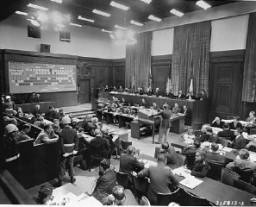
Portrait of Herschel Grynszpan taken after his arrest by French authorities for the assassination of German diplomat Ernst vom Rath. Grynszpan (1921-1943?). Born in Hannover, Germany, was the son of Polish Jews who had immigrated to Germany. In 1936 Grynszpan fled to Paris. On November 7, 1938, after having learned of the expulsion of his parents from Germany to Zbaszyn the Polish frontier, Grynszpan assassinated Ernst vom Rath, the third secretary of the German embassy in Paris. The diplomat's…
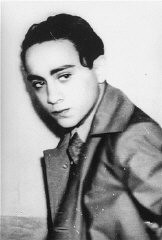
The Hadamar Trial of October 1945 was the first mass atrocity trial held in the US occupation zone of Germany following World War II.
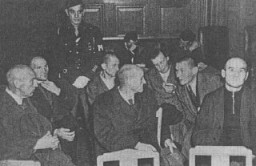
Learn more about Slovakia during World War II, its alliance with Nazi Germany, and its involvement in the Holocaust.
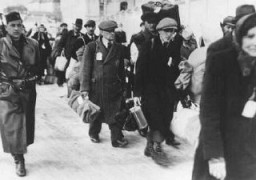
Originally a subcamp of Buchenwald, Dora-Mittelbau became the center of an extensive network of forced-labor camps for the production of V-2 missiles and other weapons.

Learn about the death march of prisoners from the Sachsenhausen camp, liberation of the remaining prisoners, and postwar trials of camp staff.

The 80th Infantry Division participated in major WWII campaigns and is recognized for liberating Buchenwald and the Ebensee subcamp of Mauthausen in 1945.
July 10, 1940. On this date, Germany and Britain began fighting for air control of the English Channel in the Battle of Britain.
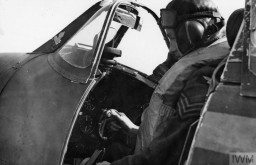
March 14, 1938. Days after Nazi Germany annexed Austria, Churchill delivered a warning about German aggression.
Gertrud, born Gertrud Herz, was one of three children born to a Jewish family in the German capital of Berlin. In her early twenties, Gertrud married Richard Teppich and the couple had two daughters. Richard owned and operated a dry-cleaning business. 1933-39: When Gertrud's husband died in 1931 she stayed on in their Berlin apartment. In 1938, five years after the Nazis came to power, Gertrud's oldest daughter, Ilse, and her family fled to Amsterdam. A year later her youngest daughter was able to leave…
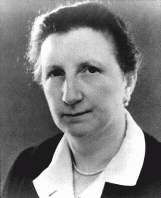
While some European Jews survived the Holocaust by hiding or escaping, others were rescued by non-Jews. Learn more about these acts of resistance.
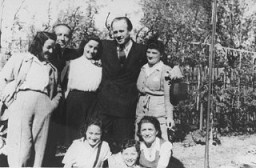
Gisella lived with her parents, grandparents, uncle, and older sister, Inge, in Lechenich, a small village outside of Cologne. The Bergs were an observant Jewish family. Gisella's grandfather was the president of the local synagogue association and her uncle was the cantor. Her father, Josef was a respected cattle dealer, who had many business and personal contacts with their Jewish and non-Jewish neighbors. 1933–39: Gisella was born several months after the Nazis came to power. Her parents feared for…
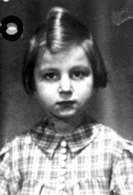
View an animated map showing key events in the history of the Auschwitz camp complex in German-occupied Poland.
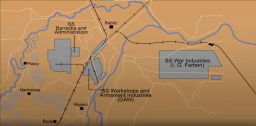
Ben Ferencz investigated and prosecuted Nazi crimes and devoted his career to creating an international system of justice. Learn about his activities and impact.
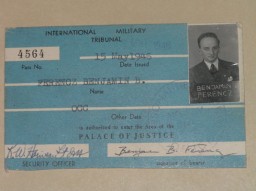
Consideration of American responses to Nazism during the 1930s and 1940s raises questions about the responsibility to intervene in response to persecution or genocide in another country.

World War II lasted from 1939 to 1945, when the Allies defeated the Axis powers. Learn about key invasions and events during WWII, also known as the Second World War.
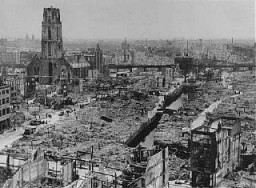
Janka was one of seven children raised in a Yiddish-and Hungarian-speaking household by religious Jewish parents in the city of Kosice. In 1918, when she was 20 years old, Kosice changed from Hungarian to Czechoslovak rule. Three years later, Janka married Ludovit Gruenberger, and their three children were born Czech citizens. 1933-39: Janka was an accomplished milliner, and she helped her husband run a tailoring business from their apartment. Like many Jews in Kosice, Janka and Ludovit were upset when…
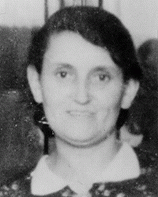
In an attempt to prevent the German annexation of Austria, Austrian chancellor Kurt von Schuschnigg called a plebiscite (referendum) on Austrian independence. On March 11, 1938, the Germans pressured Schuschnigg to cancel the plebiscite and resign. This German newsreel footage from March and April 1938 served as propaganda for the Nazi annexation of Austria. It begins with images of pro-Nazi residents in Graz expressing their opposition to Schuschnigg's plebiscite. It also includes footage after…
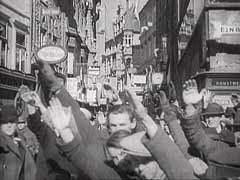
Vidkun Quisling headed the German-controlled government of Norway from 1942-1945. Because of his actions, his name became synonymous with Nazi collaboration.

Learn about the establishment of the Theresienstadt camp/ghetto, which served multiple purposes from 1941-45 and had an important propaganda function for the Germans.
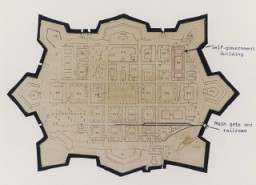
The War Refugee Board was formed in 1944 by executive order under President Roosevelt. It was tasked with the rescue and relief of victims of Nazi oppression.
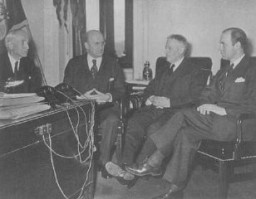
The 84th Infantry Division participated in major WWII campaigns and is recognized for liberating two Neuengamme subcamps, Hannover-Ahlem and Salzwedel, in 1945.
Survivors of the Holocaust faced huge obstacles in rebuilding their lives. Learn about the challenges they faced in the aftermath of the Holocaust.
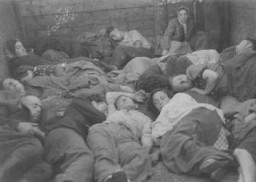
More than one thousand unaccompanied refugee children fleeing Nazi persecution arrived in the United States between 1933 and 1945. Learn more
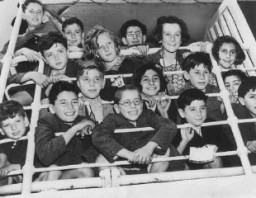
The Auschwitz camp system, located in German-occupied Poland, was a complex of 3 camps, including a killing center. Learn about the history of Auschwitz.
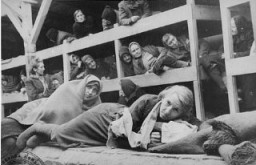
Italy was home to one of the oldest Jewish communities in Europe. It was also a member of the Axis alliance with Nazi Germany. Learn about Italy during WWII and the Holocaust.
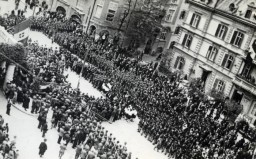
At the Wannsee Conference in Berlin in January 1942, the SS (the elite guard of the Nazi state) and representatives of German government ministries estimated that the "Final Solution," the Nazi plan to kill the Jews of Europe, would involve 11 million European Jews, including those from non-occupied countries such as Ireland, Sweden, Turkey, and Great Britain. Jews from Germany and German-occupied Europe were deported by rail to the killing centers in occupied Poland, where they were killed. The Germans…

Historical events should be analyzed in their appropriate historical context. Learn how to assess the identify the quality, reliability, and integrity of a source.
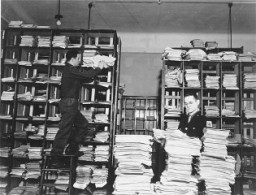
Before the Nazi rise to power in 1933, Europe had a vibrant, established, and diverse Jewish culture. By 1945, two out of every three European Jews had been killed.
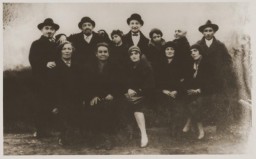
As part of the “Final Solution,” Nazi Germany organized systematic deportations of Jews from across Europe to ghettos and killing centers. Read more.
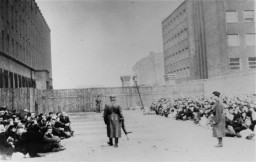
Read the Jewish Partisan Educational Foundation's short biography of Allen Small.
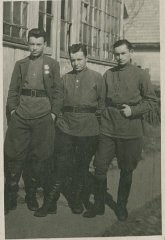
Read the Jewish Partisan Educational Foundation's short biography of Tuvia Bielski.
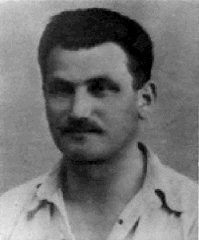
The 11th Armored Division participated in major WWII campaigns and is recognized for liberating Mauthausen and Gusen in 1945.
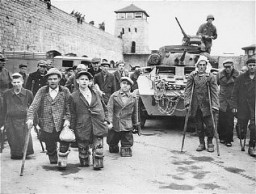
The 63rd Infantry Division participated in major WWII campaigns and is recognized for liberating several of the Kaufering subcamps of Dachau in 1945.
We would like to thank Crown Family Philanthropies, Abe and Ida Cooper Foundation, the Claims Conference, EVZ, and BMF for supporting the ongoing work to create content and resources for the Holocaust Encyclopedia. View the list of donor acknowledgement.